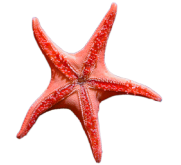Five more harbor seal pups patient admitted to the Wildlife Response Program from across Alaska June 25, 2025
A statewide rescue effort led by the Alaska SeaLife Center’s Wildlife Response Program brings in five more harbor seal pups from across Alaska
The Alaska SeaLife Center (ASLC) has admitted five more harbor seal pups to the Wildlife Response Program in the span of twelve days from across the state of Alaska. Of the new patients, two pups remain in poor health, two are in critical condition, and one sadly succumbed to an infection despite intensive care efforts. These cases follow the recent admissions of an orphaned northern sea otter pup and four previously admitted harbor seal patients, all of whom required intensive rehabilitation and veterinary care.
On June 6, a female harbor seal pup was found alone on a beach near Nikiski, Alaska. Photos sent to the ASLC Wildlife Stranding Hotline confirmed that the pup was malnourished and dehydrated, likely from maternal separation. After receiving National Oceanic and Atmospheric Administration (NOAA) approval, the female pup was transported by ASLC volunteers in Kenai all the way to Seward for care. Now identified as patient PV2507, the pup is under the care of ASLC’s veterinary and wildlife response teams. While she remains in a guarded state, she has been stable for the past few days and continues to show slow signs of improvement.
On June 10, a male harbor seal pup was admitted from the remote community of Pilot Point, Alaska. Following a two-flight journey to Anchorage, the pup arrived in increasingly fragile condition. In a critical window where every minute mattered, the owner of Kenai Aviation graciously volunteered to fly the pup directly to Seward on a third and final flight, ensuring he could receive immediate veterinary care.
Bloodwork confirmed the pup was battling a severe internal infection, and when his fever spiked above 105 degrees Fahrenheit the morning after his admit, the ASLC veterinary and wildlife response teams moved into critical care mode. Despite hours of intensive treatment, the pup unfortunately succumbed to his condition. The Alaska SeaLife Center extends its sincere gratitude to the Kenai Aviation pilot whose rapid response gave this vulnerable pup the best possible chance. Their support was vital in delivering urgent care when it mattered most, and it didn’t stop there.
The very next morning, on June 11, the Kenai Aviation team once again stepped in to help, transporting another harbor seal pup from Anchorage to Seward. This patient had traveled all the way from Sitka, Alaska, highlighting the statewide reach and rapid coordination of the ASLC Wildlife Response Program. Now identified as PV2509, the female harbor seal pup was found extremely malnourished and dehydrated. She remains in critical condition under close observation and intensive care.
The stream of patients being admitted wasn’t over yet. While the team worked to stabilize patient PV2509, the ASLC was monitoring a pup in a popular fishing area in Homer. At the beginning, an adult seal was observed briefly returning to the pup, but as the pup remained in a high-traffic area, more interactions between the pup and people were documented. Her condition deteriorated, and concerns grew. With no further sign of the mother and the pup’s health declining, authorization was granted. She was transported to the ASLC late on the night of June 12. She is now known as patient PV2511.
A few days later, on June 17, a seal pup near Egegik was reported alone. Photos sent showed a pup in lanugo with an umbilicus, indicating this was a premature seal. The next day, he was still in the area and there had been reports of people interacting with him. Due to his condition and location, this animal was also authorized for recovery and rehabilitation. Thanks to the generous help of Coastal Air LLC, he was flown to King Salmon on short notice so he could make his flight to Anchorage. Harbor seal PV2512 is currently under critical care due to his delicate condition.
Unfortunately, these most recent patient admits highlight the serious impacts human presence can have on harbor seal pups during pupping season. One of the most significant threats to these pups is disturbance from people and pets. If a mother seal is interrupted or feels unsafe, especially in high-traffic areas, she may abandon her pup. Once abandoned, a pup’s chances of survival drop sharply, particularly during the early days when it relies entirely on its mother’s milk for nutrition, immune support, and growth.
It is critical to give seals space and share coastal areas responsibly. Never approach, touch, or attempt to move a seal pup. Keep children and pets well away from haul-out sites and known pupping areas. Approaching or disturbing a marine mammal can cause lasting harm, pose safety risks to people, and may violate the Marine Mammal Protection Act. Responsible viewing helps ensure that young animals have the best possible chance to grow and survive in the wild.
If you do see a seal pup in distress, the Alaska SeaLife Center remains ready to respond to reports of stranded and injured marine mammals statewide. Call the 24-hour Stranded Marine Animal Hotline at 1-888-774-SEAL (7325). We encourage all Alaskans and visitors to save this number in their phone contacts—and remember, always call first before approaching any stranded or injured wildlife.
The Alaska SeaLife Center’s Wildlife Response Program can only provide care for stranded and injured marine animals with help from corporate sponsors and individual donors. People are encouraged to contribute to the care of rehabilitating marine animals here: www.alaskasealife.org/donate.
The Center acknowledges the ongoing generous support of the Wildlife Response Program from supporters like ConocoPhillips Alaska, Marathon Petroleum Corporation, PetZoo, Partners 4 Wildlife, Matson, GCI, and a number of individual donors, funds, and foundations such as Stanley J Williams Fund, Mesara Family Foundation, M.E. Webber Foundation, and the NC Giving Fund.




